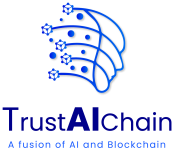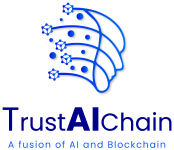The Intersection of AI and Blockchain
AI and blockchain are two of our most significant technological advancements. AI excels in processing and analyzing large datasets, while blockchain ensures data integrity and security through its decentralized and immutable nature. Combining these technologies can enhance data security, making statistical analysis more reliable and trustworthy.
TensorFlow: A Primer
TensorFlow is an open-source AI framework developed by Google. It is widely used for machine learning and deep learning applications due to its flexibility and scalability. TensorFlow allows developers to build and train models for various tasks, including image recognition, natural language processing, and statistical analysis. Its ability to handle large datasets and complex computations makes it ideal for statistical analysis.
Blockchain: Ensuring Data Integrity
Blockchain is a decentralized ledger technology that ensures data integrity and security through cryptographic hashing and consensus mechanisms. Each block in a blockchain contains a cryptographic hash of the previous block, a timestamp, and transaction data. This structure makes it nearly impossible to alter data without detection, providing a secure and transparent method for recording transactions and data.

Algorithm: Integrating TensorFlow with Blockchain
Step 1: Setup Environment
Install TensorFlow: First, we need to install TensorFlow. TensorFlow is an open-source AI framework that will be used for our statistical analysis.
This command installs TensorFlow using Python’s package manager, pip.
Choose a Blockchain Platform: We’ll use Hyperledger Fabric, a popular blockchain framework, for this example.
Step 2: Initialize Hyperledger Fabric Network
Install Hyperledger Fabric: Follow the official Hyperledger Fabric documentationto install and set up Hyperledger Fabric.
Create a Blockchain Network: Initialize and configure your blockchain network. This involves setting up channels and peers to participate in the network.
Step 3: Develop Smart Contracts
Write Smart Contracts: Smart contracts are self-executing contracts with the terms directly written into code. Here, we create a simple, smart contract using Node.js to store and retrieve data.
const { Contract } = require('fabric-contract-api'); class DataContract extends Contract {
async storeData(ctx, dataID, data) {
await ctx.stub.putState(dataID, Buffer.from(data));
return `Data with ID ${dataID} stored successfully.`;
}
async retrieveData(ctx, dataID) {
const data = await ctx.stub.getState(dataID);
if (!data || data.length === 0) {
throw new Error(`Data with ID ${dataID} does not exist.`);
}
return data.toString();
}
}
module.exports = DataContract;
Contractclass: This is imported from the Fabric contract API.storeData(ctx, dataID, data): This function stores data on the blockchain.ctx.stub.putStatestores the data identified bydataID.retrieveData(ctx, dataID): This function retrieves data from the blockchain.ctx.stub.getStatefetches the data usingdataID.
Step 4: Integrate TensorFlow with Blockchain
Prepare Data: We start by preprocessing our data using TensorFlow.
import tensorflow as tf # Example data preprocessing
data = [1.0, 2.0, 3.0, 4.0, 5.0]
dataset = tf.data.Dataset.from_tensor_slices(data)
tf.data.Dataset.from_tensor_slices(data): This creates a TensorFlow dataset from the provided data.
Train TensorFlow Model: Next, we train a simple TensorFlow model.
model = tf.keras.Sequential([
tf.keras.layers.Dense(10, activation='relu'),
tf.keras.layers.Dense(1)
])
model.compile(optimizer='adam', loss='mean_squared_error')
model.fit(dataset, epochs=10)
tf.keras.Sequential(): Creates a sequential model.tf.keras.layers.Dense(): Adds layers to the model.model.compile(): Configures the model for training.model.fit(): Trains the model on the dataset for a specified number of epochs.
Store Model Parameters on Blockchain: After training, we store the model parameters on the blockchain to ensure their integrity.
import json
from hyperledger.fabric import Client # Assume model parameters are stored in model_params variable
model_params = model.get_weights()
serialized_params = json.dumps(model_params.tolist())
# Interact with Hyperledger Fabric to store parameters
client = Client('mychannel')
contract = client.get_contract('datacontract')
contract.submit_transaction('storeData', 'modelParams', serialized_params)
model.get_weights(): Retrieves the model parameters.json.dumps(): Serializes the parameters in JSON format.Client('mychannel'): Initializes a client for a specific Hyperledger Fabric channel.client.get_contract('datacontract'): Gets the contract instance.contract.submit_transaction('storeData', 'modelParams', serialized_params): Submits a transaction to store the model parameters on the blockchain.
Step 5: Secure and Retrieve Data for Analysis
Store Data on Blockchain: We store statistical data for secure analysis.
# Example data
statistical_data = [1.0, 2.0, 3.0, 4.0, 5.0]
serialized_data = json.dumps(statistical_data) # Store data on blockchain
contract.submit_transaction('storeData', 'statData', serialized_data)
statistical_data: Our example dataset.json.dumps(): Serializes the dataset to JSON format.contract.submit_transaction('storeData', 'statData', serialized_data): Submits a transaction to store the statistical data on the blockchain.
Retrieve Data for Analysis: We retrieve the data from the blockchain for analysis using TensorFlow.
response = contract.evaluate_transaction('retrieveData', 'statData')
retrieved_data = json.loads(response) # Use retrieved data in TensorFlow
retrieved_dataset = tf.data.Dataset.from_tensor_slices(retrieved_data)
contract.evaluate_transaction('retrieveData', 'statData'): Retrieves the data from the blockchain.json.loads(response): Deserializes the retrieved JSON data.tf.data.Dataset.from_tensor_slices(retrieved_data): Converts the retrieved data into a TensorFlow dataset.
Use Cases for Enhanced Statistical Analysis
1. Healthcare Data
Integrating TensorFlow and blockchain in healthcare can secure patient data while enabling advanced statistical analysis. Patient records can be stored on the blockchain to ensure immutability and security. TensorFlow models can then analyze this data to predict health trends, detect anomalies, and recommend personalized treatment plans.
2. Financial Transactions
Financial institutions can leverage this integration to analyze transaction data securely. Blockchain ensures the integrity of transaction records, while TensorFlow can detect fraudulent activities, analyze spending patterns, and predict market trends.
3. Research Data
Academic and scientific research often involves sensitive data that requires high levels of security. Researchers can ensure data integrity and prevent tampering by storing research data on the blockchain. TensorFlow can be used to analyze this data for statistical patterns, correlations, and insights.
Challenges and Considerations
While integrating TensorFlow with blockchain offers numerous benefits, there are challenges to consider:
- Scalability: Blockchain networks can face scalability issues, especially with large datasets.
- Computational Overhead: Combining TensorFlow and blockchain may introduce additional computational overhead.
- Implementation Complexity: Setting up and maintaining a combined system requires technical expertise.
Future Prospects and Innovations
The integration of AI and blockchain is still in its early stages, but the future holds exciting possibilities. Emerging trends include:
- Federated Learning: Combining federated learning with blockchain to enhance data privacy.
- Decentralized AI: Developing decentralized AI models that leverage blockchain for data sharing and model training.
- Smart Contracts for AI: Using smart contracts to automate AI model training and deployment.
In Summary
Integrating TensorFlow with blockchain technology presents a powerful solution for enhancing data security in statistical analysis. By leveraging both technologies’ strengths, organizations can ensure data integrity, improve security, and derive valuable insights from their data. As this field evolves, the potential applications and benefits will only grow, paving the way for more secure and efficient data analysis.
Call to Action
Explore the integration of AI and blockchain in your projects to enhance data security and integrity. Join the discussion and share your experiences to contribute to this growing field.










2 Responses
Very informative article. I love how you explained each step by step with example codes. However, can you expand more on the challenges that are facing the integration of Tenserflow with Blockchain?
Hi Stephen,
I’m glad you found the article informative! Some of the challenges facing the integration of TensorFlow with Blockchain are the issues of scalability, performance, and latency.
TensorFlow requires substantial computational resources for training and inference, which can be difficult to scale on a blockchain due to its decentralized nature and the consensus mechanisms involved. The size of the blockchain can grow rapidly with the integration of large datasets and models, leading to issues with storage and speed. Also, blockchain transactions can be slow due to the need for consensus among nodes. This latency can impact the performance of real-time TensorFlow applications, and running TensorFlow models on a blockchain might suffer from latency issues, making it challenging for applications requiring real-time processing.